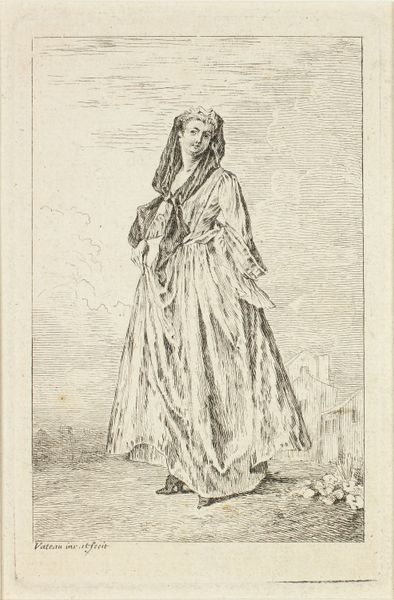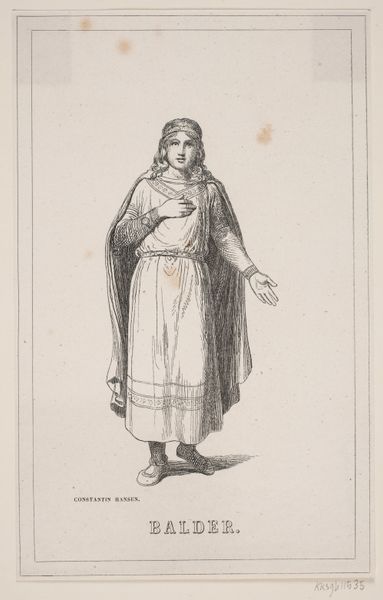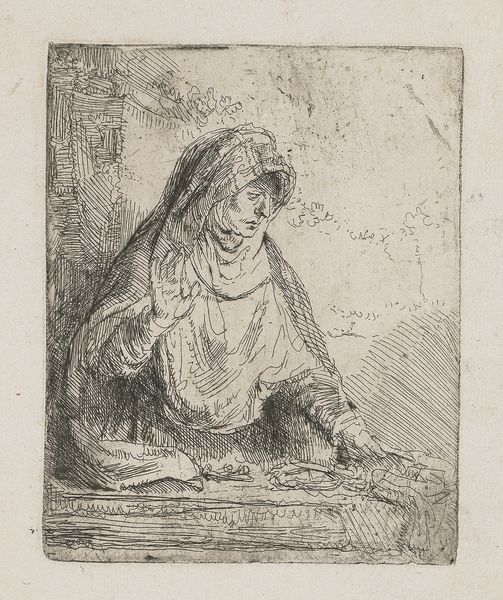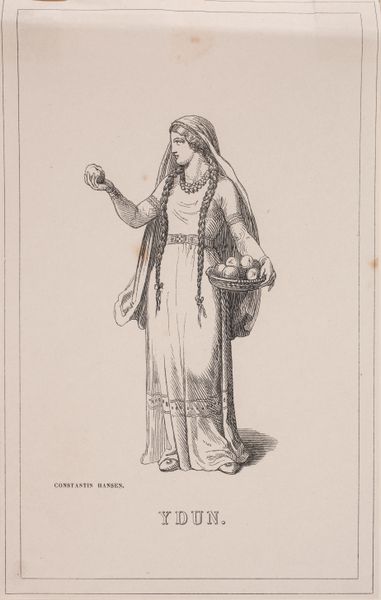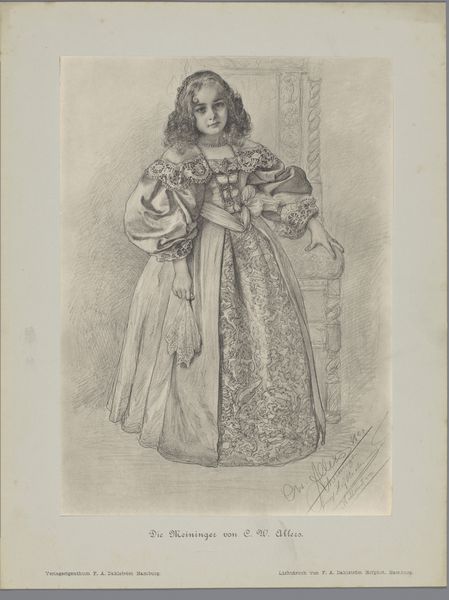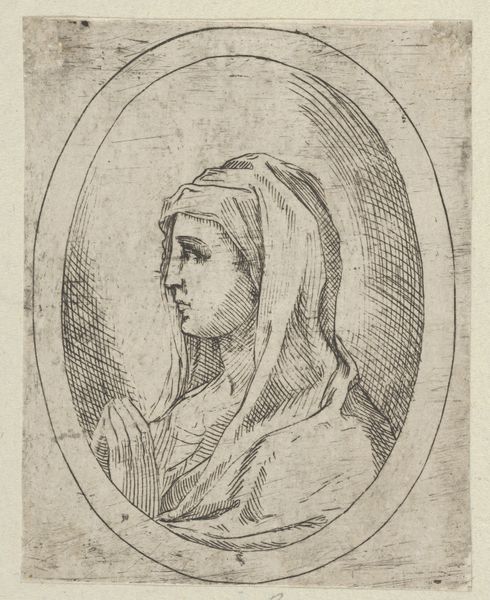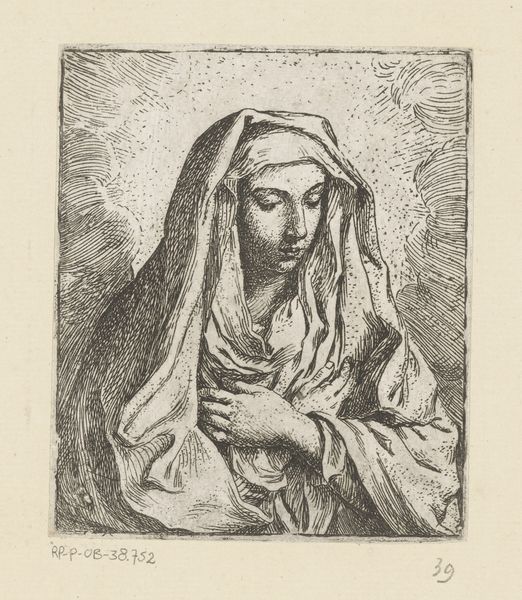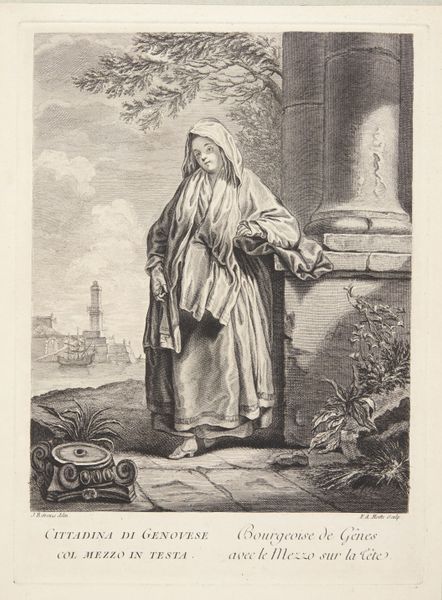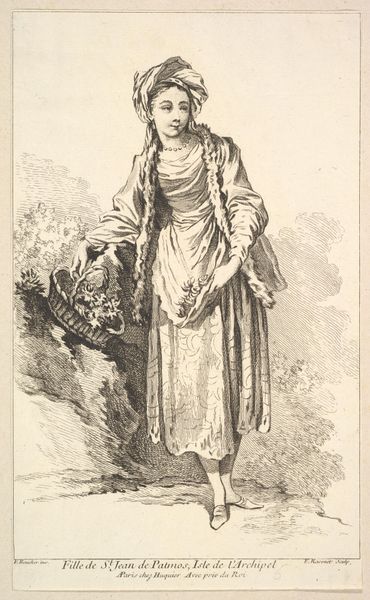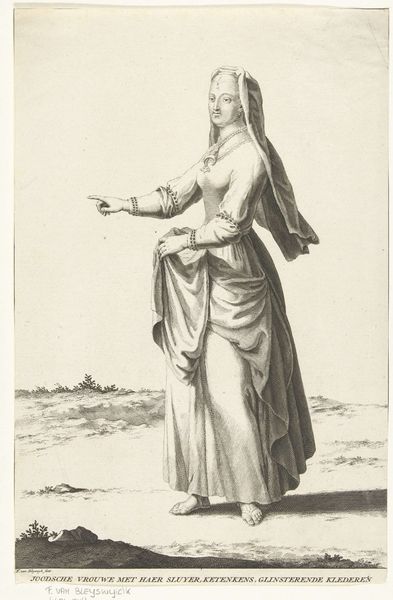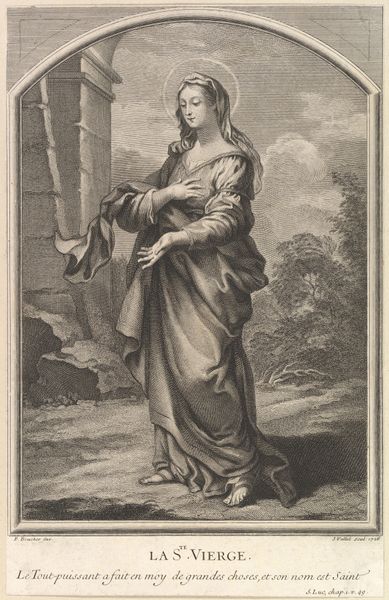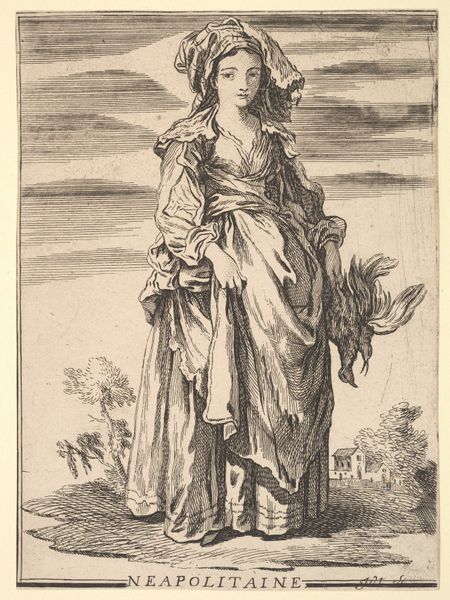
print, engraving
#
portrait
# print
#
old engraving style
#
15_18th-century
#
genre-painting
#
history-painting
#
engraving
#
rococo
Dimensions: height 132 mm, width 94 mm
Copyright: Rijks Museum: Open Domain
Editor: Here we have "Moskovische Vrouw", a print by Jean Baptist Leprince dating back to the late 18th century. The engraving depicts a Russian woman in traditional dress. What strikes me is how she stands apart, almost stoic, amidst the lively background scene. What do you see in this piece? Curator: I see a deliberate construction of otherness. Leprince, a Western European artist, is depicting a woman from Moscow, likely based on travels or, more probably, mediated accounts. We must ask: for whom was this image created, and what purpose did it serve? It feeds into a broader European fascination, often orientalist, with portraying cultures deemed exotic, doesn't it? Editor: Absolutely. And the other figures almost become props in her story, rather than subjects in their own right? Curator: Precisely. Consider how the print, as a medium, facilitates dissemination. Images like these contributed to shaping public perceptions, creating a visual language around national and cultural identity, and often solidifying hierarchical power dynamics. Does the woman's attire strike you as realistically captured or romanticized? Editor: I think there's a certain romanticizing, especially with the emphasis on her garments. She becomes a symbol. Curator: Yes, she transforms into an emblem, representing a specific place, a particular identity, through a European lens. What happens when we question who controls that lens? When those who are depicted reclaim their own narrative? Editor: That's powerful. I never really considered how much power is embedded even in these seemingly simple depictions. Curator: Indeed. This engraving invites us to contemplate the ethics of representation and the enduring impact of visual narratives in constructing identity and perpetuating power imbalances. Editor: That really sheds new light on what I initially perceived as a simple genre scene. Thanks so much for this context.
Comments
No comments
Be the first to comment and join the conversation on the ultimate creative platform.
